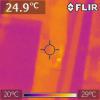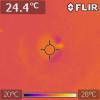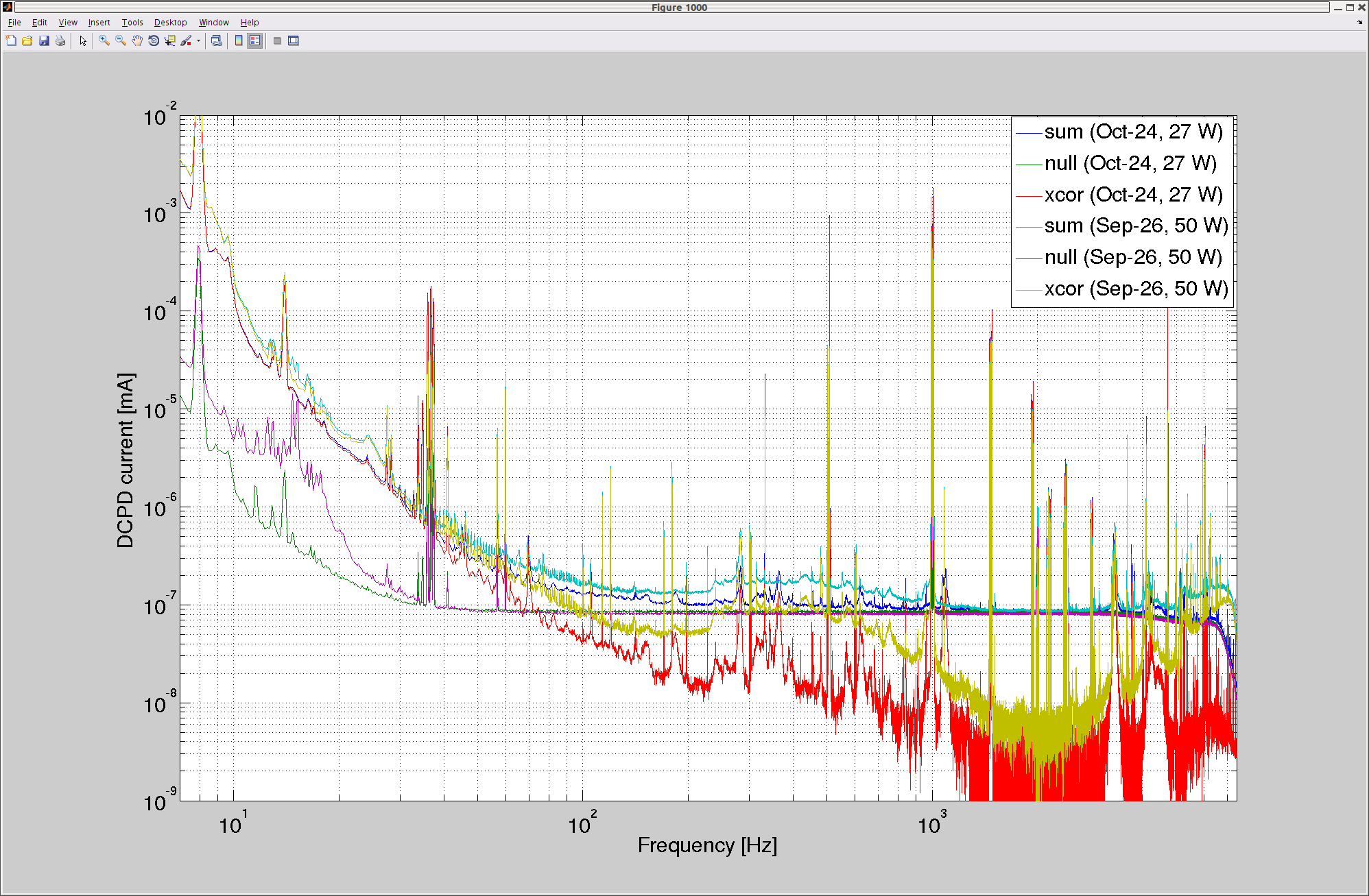Rick, Evan G., Travis
As part of the bi-annual PCal maintenance, today we optimized the drive range of the PCal OFS for both end stations. The procedure for this was:
1) Turn off PCal lines and inject 10 Hz sine wave.
2) Break the OFS lock.
3) Note that the AOM drive is large (~1.5V) with loop open.
4) Adjust the offset in 1V steps to find the maximum OFS PD output.
5) Record max OFS PD output.
6) Close shutter and record minimum OFS PD output.
7) Set offset to half of 95% of max OFS PD output.
8) Find amplitude of injected sine wave that give us the maximum p-p OFS PD voltage.
9) Record magnitudes of carrier and sideband frequencies of the OFS and TX PDs.
Results:
PCal X:
Max OFS PD out = 10.5 V
95% of Max OFS PD out = 10 V p-p
OFS PD output with shutter closed = -0.01 V
Offset set to 5.00 V
64000 cts. peak is maximum - > ~10V p-p
Harmonics:
OFS PD
carrier 14 dB
1st SB -42.7 dB
2nd SB -43.5 dB
TX PD
carrier -234 dB
1st SB -294 dB
2nd SB -291.1 dB
Max modulation at 90% of this value - > 57,000 cts. PEAK (out of 64000 cts.)
PCal Y:
Max OFS PD out = 7.9 V
95% of Max OFS PD out -> 7.5 Vp-p
OFS PD output with shutter closed = -0.01
Offset set to 3.75 V
49000 its peak is maximum -> ~7.5V p-p
Harmonics:
OFS PD
carrier 11.75 dB
1st SB -67.4 dB
2nd SB -56 dB
TX PD
carrier -230.2 dB
1st SB -294.5 dB
2nd SB -295.1 dB
Max modulation at 90% of this value - > 44,000 cts. PEAK (out of 49000 cts.)
































